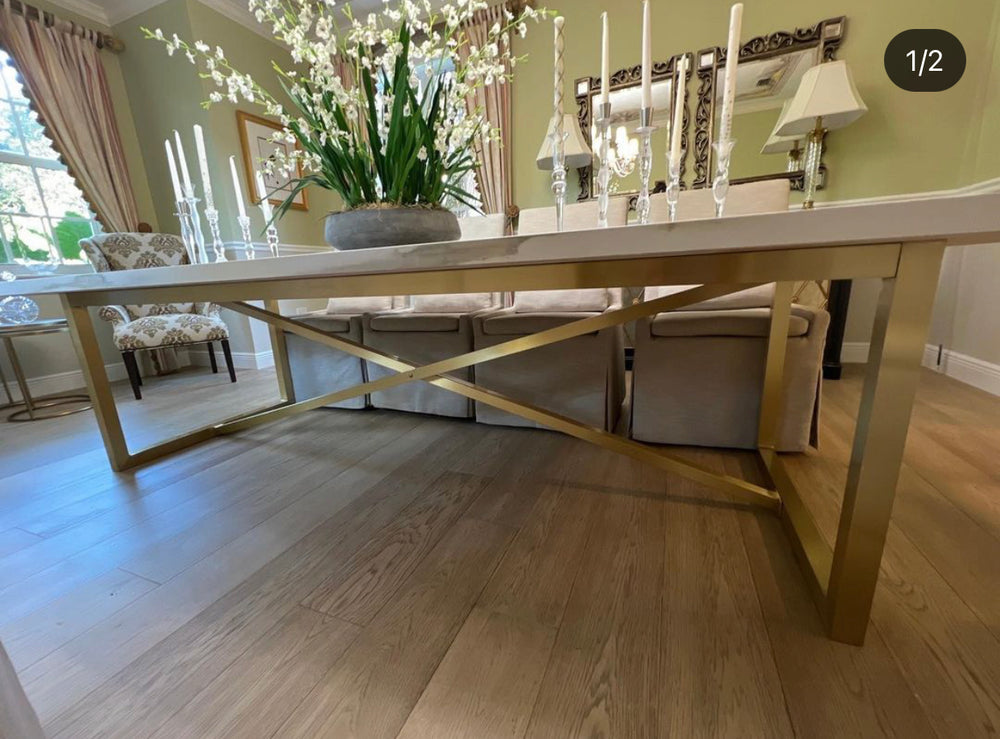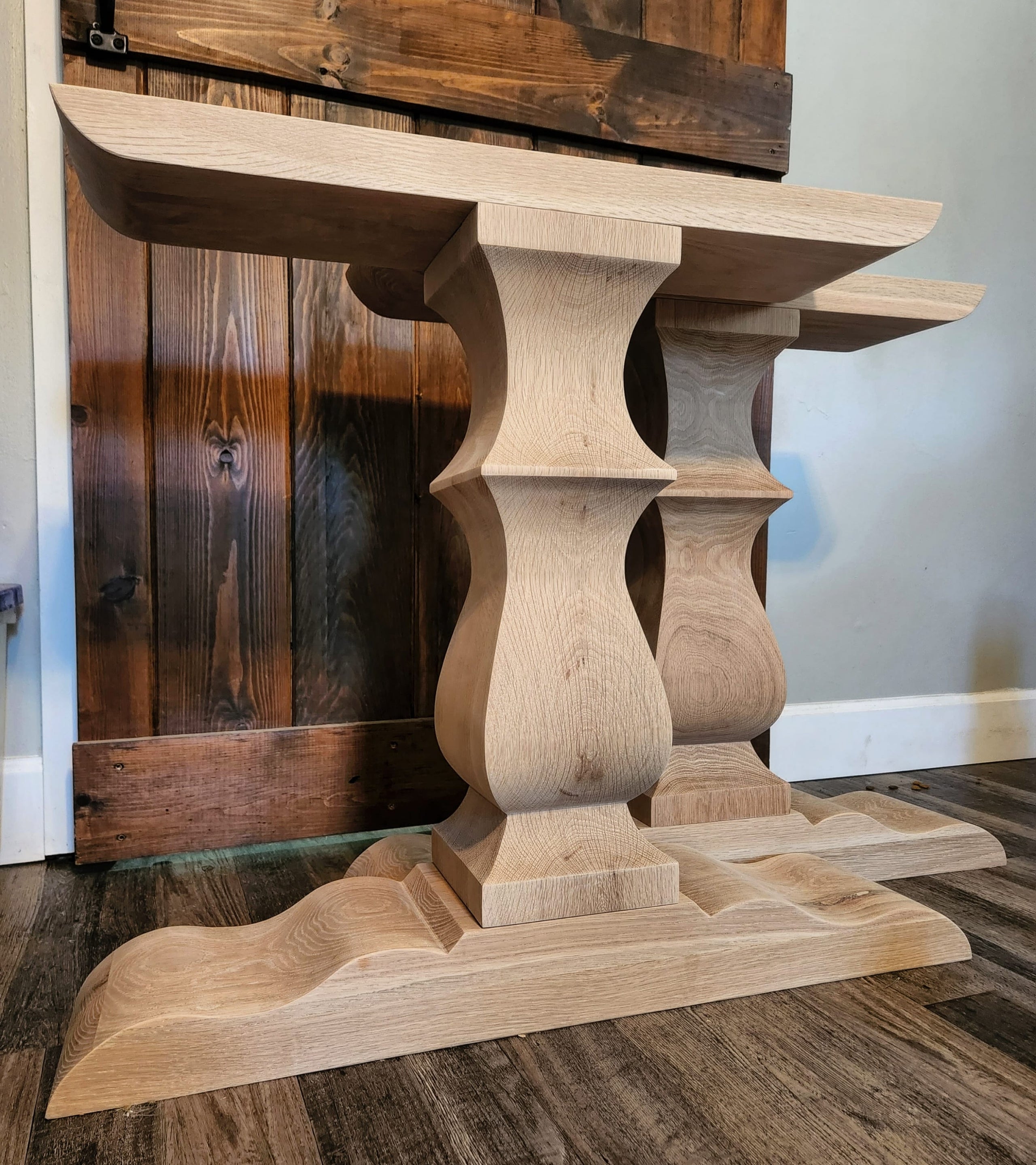Unique Dining Room Table Legs That Will Elevate Your Dining Area
Unique Dining Room Table Legs That Will Elevate Your Dining Area
Blog Article
From Conventional to Modern: Find the Perfect Dining Room Table Legs for Your Design
The option of dining space table legs plays a critical role in specifying the overall personality of your area, linking the space between typical craftsmanship and modern appearances. While traditional designs such as cabriole and transformed legs evoke a feeling of timeless refinement, contemporary designs like hairpin and geometric alternatives present a possibility for striking visual passion. Assessing the appropriate balance in between these styles needs a nuanced understanding of your existing décor and individual taste. As you think about these components, the question continues to be: how can you effortlessly incorporate these diverse leg designs to develop a harmonious dining experience?
Recognizing Table Leg Styles
The selection of dining-room table leg styles can considerably influence both the aesthetic appeals and capability of the area. Each leg design contributes special functional features and aesthetic components, accommodating varied design choices and usage needs. Recognizing these designs is vital for selecting the appropriate dining table that lines up with your total interior decoration vision.
For example, tapered legs offer a tidy, timeless look that can boost a room's sophistication, while pedestal bases offer security and make best use of legroom, making them optimal for smaller rooms. Hairpin legs, a hallmark of mid-century modern style, present a commercial panache, permitting a ventilated, open feeling. Trestle legs stimulate rustic beauty, offering durable support and a feeling of timelessness.
Moreover, the choice of materials plays a considerable role. Wooden legs can bring heat and structure, whereas steel options frequently convey a smooth, contemporary ambiance. Eventually, comprehending table leg designs is crucial for developing a cohesive dining location that mirrors individual design while making certain practicality and comfort. By attentively considering these aspects, you can improve both the practical and aesthetic appeal of your dining room.
Traditional Table Leg Options
When picking dining-room table legs, standard options often personify timeless beauty and craftsmanship. These designs reflect a rich heritage and a dedication to top quality, making them excellent for those that value timeless visual appeals.
Among the most renowned typical leg styles is the cabriole leg, identified by its stylish bent form. This layout frequently includes ornamental makings and is most commonly discovered in Queen Anne and Chippendale furnishings. One more popular option is the transformed leg, which boasts a series of smooth, rounded forms that supply a timeless look while maintaining security.
Additionally, the straight leg, while basic, supplies a strong and basic structure that can mix effortlessly with a range of tabletop designs. For those drawn to ornate outlining, claw-and-ball feet legs evoke a feeling of magnificence and can act as a sensational centerpiece in any type of eating room.
Lastly, stand bases, although not purely legs, supply a different traditional choice that permits enough legroom and can Check This Out be beautifully sculpted. Each of these typical leg styles contributes to the general atmosphere of a dining-room, marrying feature with visual appeal.

Modern Table Leg Designs
Modern table leg designs provide a diverse range of styles that stress cutting-edge materials and tidy lines. These styles frequently focus on performance while acting as striking focal points within a dining space. Minimalist looks prevail, with legs crafted from materials such as steel, glass, and engineered timber, which add to a ventilated and modern feeling.
One popular design is the hairpin leg, defined by its slim, conical structure that offers stability without frustrating the tabletop (dining room table legs). This design is often discovered in mid-century modern furnishings and can easily complement various eating This Site table shapes. An additional trend is making use of geometric forms, where legs may tackle unbalanced or angular forms, adding aesthetic passion and a touch of creativity

Blending Designs for Distinct Spaces
Usually, property owners seek to develop one-of-a-kind dining areas that mirror their personal style by mixing numerous style aspects. This method enables the unification of diverse appearances, resulting in an unified yet distinct setting. Combining a rustic wooden table with streamlined, contemporary metal legs can develop a captivating contrast that boosts the room's total charm.
In addition, incorporating vintage table legs with contemporary table tops can evoke a feeling of history while maintaining a modern-day perceptiveness. Such combinations not only display individual taste but also motivate creative thinking, permitting home owners to curate an area that feels both individual and inviting.
Shade plays an important function in this blending procedure; choosing table legs that enhance or contrast with the existing color pattern can boost visual rate of interest. Whitewashed legs can soften the daring of a dark table surface, creating a balanced aesthetic.
Tips for Choosing the Right Legs
Picking the right table legs is crucial for accomplishing both functionality and aesthetic appeal in your eating space. Begin by considering the total design of your area. Conventional setups profit from legs that include detailed carvings or turned styles, while modern areas might require streamlined, minimal designs.
Next, analyze the elevation and security of the legs. dining room table legs. Basic eating tables vary in between 28 to 30 inches in elevation, so make certain the legs complement this measurement for convenience. Furthermore, durable products, such as wood or metal, can boost stability and longevity
Examine the leg shape as well-- options include straight, tapered, or pedestal designs. Straight legs use a traditional appearance, while conical legs can add a touch of beauty. Pedestal bases provide ample legroom and are perfect for smaller spaces.
Verdict
In recap, choosing the perfect eating area table legs calls for careful factor to consider of both standard and modern-day designs. By balancing leg design, height, and product with the overall decor, a cohesive and inviting ambience can be achieved.
The selection of dining room table leg styles can substantially affect both the looks and capability of the room. Inevitably, comprehending table leg styles is important for developing a cohesive eating area that reflects individual design while guaranteeing usefulness and comfort.One of the most renowned conventional leg styles is the cabriole leg, defined by its elegant bent form. Straight legs supply a timeless look, while conical legs can include a touch of sophistication.In recap, selecting the excellent eating area table legs calls for cautious factor to consider of both standard and modern designs.
Report this page